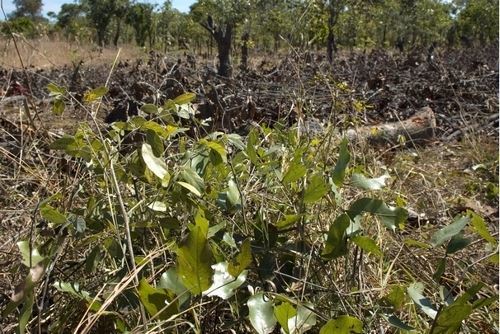
The record high food prices caused by drought in the world’s biggest agricultural exporter should make us re-consider our relationship with food and the unsustainable system we have conjured up around it.
In July 2012, the FAO Food Price Index climbed 6 percent, which can be attributed to unfavourable weather, particularly the current US drought which has driven up the price of corn on international markets. However, we are not experiencing random weather events. We are fully submerged in a climatic transition which will change the way we function on this planet with dire consequences for the poorest.
In 2007-08, we witnessed the first full blown food crisis in 30 years, with riots in over 30 countries. A lot of excuses where given to rationalize the then price increases, with many policy makers choosing to blame supply side fundamentals or the voracious appetites of China and India and largely ignoring the role that speculation on commodities markets played in exacerbating the price hikes. Inspired by the 2007-08 food crises, the G20, under France’s tutelage, has created Market Information Systems (AMIS) and a Rapid Response Forum (RRF) to avoid some of the problems in agricultural forecasting and to improve capacity to respond accordingly. Although welcome, these initiatives are like hiding behind a fig leave amidst a deluge. The food crisis of 2007-08, was not just a result of a drought in Russia or by the gluttony of emerging countries. The fact is there are many factors influencing food prices, including also our energy choices.
Biofuels mandates, targets and incentives are clever means by which we have come to satisfy our insatiable thirst for energy. This has led to a full blown struggle between food and fuel, as evidenced by the drought in the US. Mandates, subsidies and blending targets aggravate the price elasticity of demand that contributes to volatility in commodities markets. This is fueling heated debates in the US and Europe about biofuels pointing to the inevitable necessity to change our strategies.
This moment is reflection of days to come, where climate change will inevitably alter our production capacities and impact prices supply side. We need to now choose, do we adjust “business as usual” or do we continue to allow financial markets to speculate on the price of commodities, continue to divert food crops for biofuels and continue to pursue industrial models of agricultural production which weaken our soils and curtail our resilience, or capacity to respond, to climate change
We need market regulations to curb volatility, we need mandates and subsidies on agrofuels to be halted, we need strategic food reserves to support local markets and help mitigate against food price volatility and we desperately need more sustainable and resilient models of production that can adapt to climate change. In short, we need to review our entire relationship to food, from how we grow it to how we eat it, lest we are to see our cows and cars better fed than our children.
CIDSE is committed to exposing the elephant in the room and pushing policy makers to respond to the crisis of our times in a holistic manner ensuring that the human rights to adequate food is not trumped by economic interests and profit. Last year we focused our food and agriculture work on food price volatility . Later this year we will release a paper on the principles that should govern food and agricultural policies given climate change. We will present our recommendations at the 39th session of the UN Committee on World Food Security (October 2012) and at the UN Climate Summit in Doha (November 2012) later this year.
